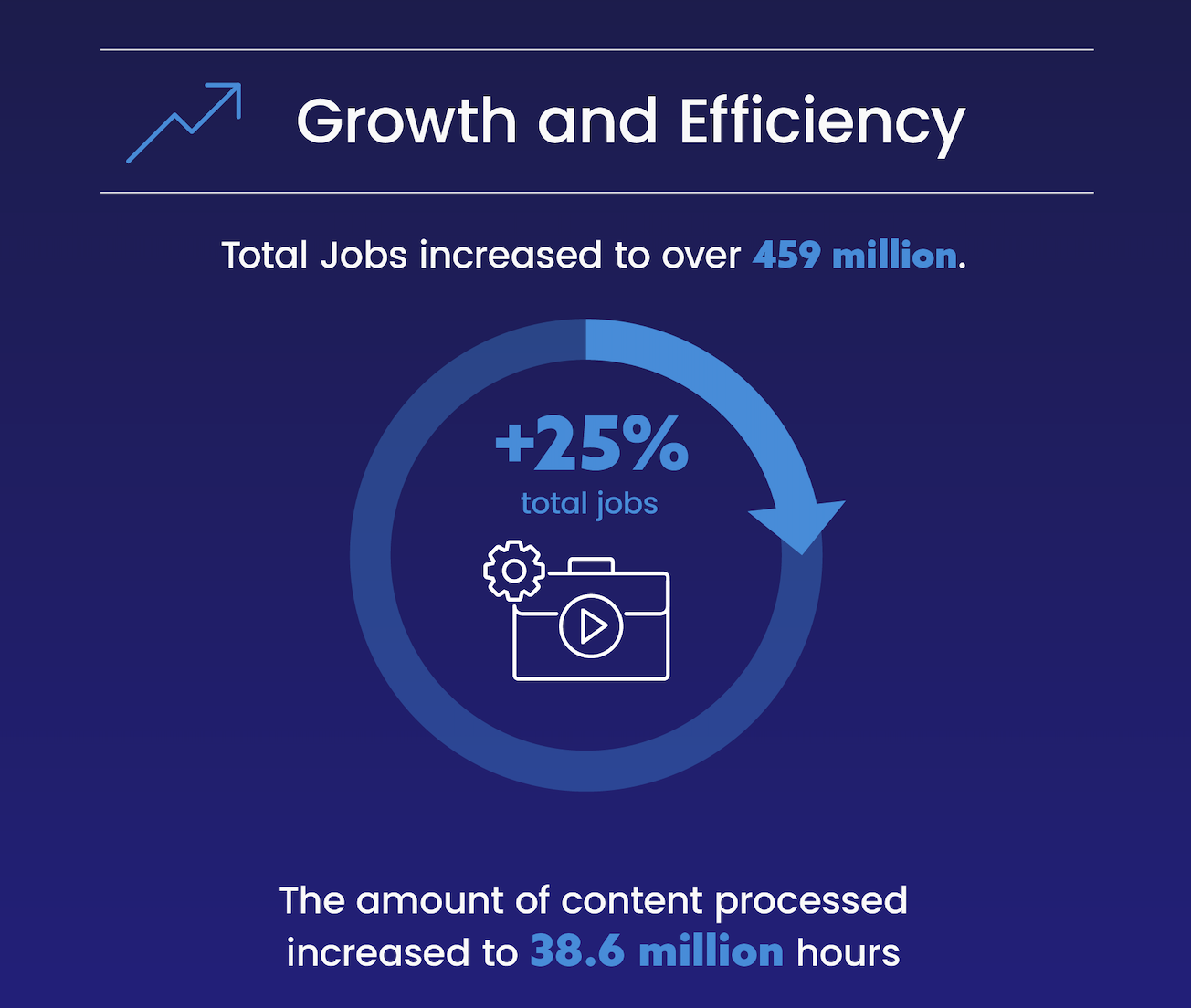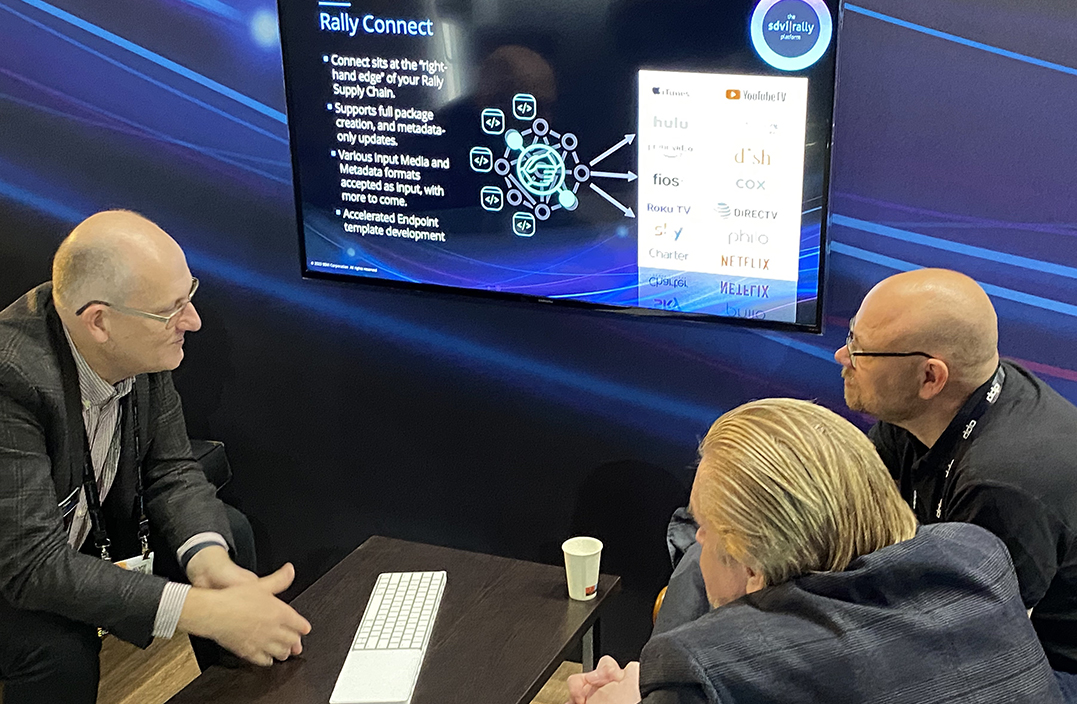After Discovery licensed library content from A+E Networks for the launch of its Discovery+ streaming service, a large amount of the library content needed to be transferred between the companies in just a matter of days. Our Brian Pelletier sat down with David Klee of A+E Networks (A+E) and Josh Derby of Discovery about how they used their SDVI Rally Media Supply Chain Platforms to establish a lightning-fast mechanism for content exchange and the challenges they overcame to be successful. You can watch their conversation here or read about it below.
BP: Dave, could you give me a bit of background on A+E’s experience with content sharing?
DK: A+E has been making great content for a long time. We have built up an excellent content library, and we regularly send content to hundreds of places around the globe. As we work with our operations teams to fulfill more and more library content deals involving new distribution platforms, we’re seeing exponential growth in the need to distribute content, particularly file-based content, from our archives to many different destinations. For that content sharing model to work, of course, content needs to be in the right format and get where it needs to go on time with the right metadata. Our Content Services and Operations team has been focused on ramping up and making that archive more agile and flexible in order to better fulfill all those deals.
BP: Josh, what does the acquisition process typically look like for Discovery, and what challenges did you face with this project?
JD: Our normal process for bringing in content is tailored to production companies that deliver a new episode of a series every week. Connected to our SDVI Rally environment, the Discovery Producer’s Portal application lets people use a web interface to upload files via Signiant or Aspera and then enter the metadata about those files by hand.
That model works really well when you’re a production company delivering an episode a week or even delivering dozens of things, but it gets really labor-intensive when you’re delivering a high volume in a short amount of time. So, when Dave and I looked at what needed to be done to move content from A+E to Discovery, we saw it would be impossible if we couldn’t figure out a fast, effective connector between our two companies.
BP: How did the idea come about to use your Rally systems to send content in a more direct, automated way?
DK: When we first heard about the volume of assets involved in this Discovery project, we weren’t sure how to best tackle this project. Luckily, we already knew Josh and the Discovery folks through a collaboration in the SDVI user community, so we called them up to see what could be done to make it work — media and metadata together — without all the manual effort.
JD: We had talked about the Producer’s Portal and agreed that surely there must be a better solution for bulk content exchange, especially as we are both Rally users. We just needed to figure out how to get along.
Because we had been building up some features to try to do direct contribution to our systems via API, we already had a beta shell of an API. A+E agreed to be the live-fire beta tester of our direct API, which reaches into our contractual system that defines the assets. This allowed A+E to give their assets a Discovery identity token, which in turn enabled us to bridge our Rally systems and create an automated content exchange workflow.
BP: Tell me a bit more about how the SDVI user community was useful to both of you throughout this project.
JD: Our relationships through the SDVI user community kind of saved this project. Many of the folks who use SDVI have a common Slack where we ask each other questions, share pro coding tips for the Rally environment, and things like that, and we used it to coordinate all the work around this project. We’d say, “Hey, this is how we do it,” and A+E would suggest, “Hey, how about try this?” It was nice to have that common development and common ecosystem language when we were building up the supply chains on both sides.
DK: As participants in the Rally supply chain universe, we’re all talking the same language. We’re approaching things in similar ways, and we’re putting content through similar supply chains. The user community offers a great opportunity to collaborate and figure out what the next best thing will be.
BP: What was the actual timeframe for moving content between your Rally systems?
JD: From testing our supply chains to actually firing assets from one system to another, it was about one week. We executed the full initial load between the silos in about 13 or 15 hours. The content came through like lightning once we had it direct-connected because we were doing all cloud-to-cloud transfers. The actual bulk content exchange executed in almost no time at all.
DK: When we first opened the floodgates, we saw hundreds of assets start to process at the same time and move through the system. That was a fun day.
BP: If this had been a manual workflow, could you have done it?
DK: I guess anything is possible with time, but we had initially estimated 30 to 60 days of manual effort by a team of five people. At that rate, completion would have been well past our target for service launches and for other agreements down the line.
JD: The estimate was a month or two, and we had five days. It was definitely a “necessity is the mother of invention” scenario.
BP: Are you still pushing through content today?
JD: We continue to use this connector as the primary method of content exchange between our companies.
DK: It wasn’t that long ago that a few hundred titles at once would have seemed like a big deal. Now, with the integration we’ve set up, it’s just a few hours’ worth of transfers once we get them all set up.
BP: Do you two have plans to explore more direct delivery of metadata?
JD: We’re looking at a couple of possibilities for expansion. Our first engagement focused on media files, video files, still images, and audio files. We’re looking to try and automate more of the process to cover caption files, subtitle files, and things like that. Most of the metadata we’ve exchanged so far has been technical metadata, but we’re moving toward using the Rally interconnect as a way of exchanging descriptive metadata.
DK: We want to get to the point where you have a list of titles, you click a button, and off they go. While the media is very close to that point, the metadata is always the more complicated side of it, and we’re always looking to streamline that part of the process.
—-
Learn more about how SDVI customers are perfecting the art of the possible. More information on the new Rally Connect content exchange service is available here.


